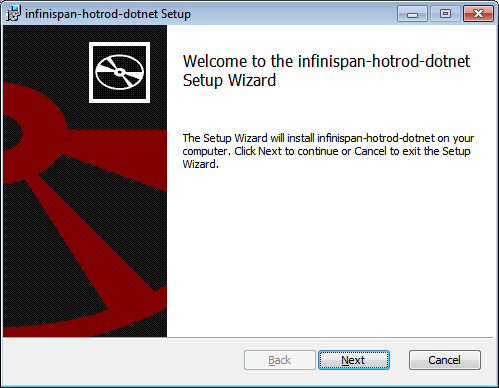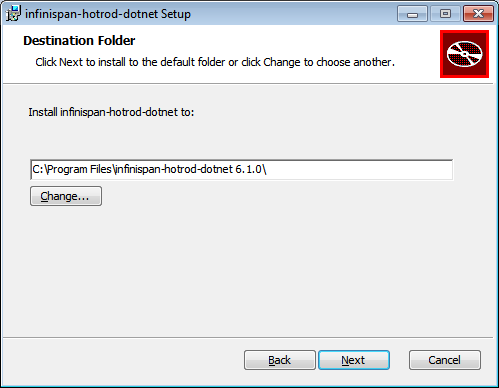此内容没有您所选择的语言版本。
13.11. Hot Rod C# Client
The Hot Rod C# client is a new addition to the list of Hot Rod clients that includes Hot Rod Java and Hot Rod C++ clients. Hot Rod C# client allows .NET runtime applications to connect and interact with Red Hat JBoss Data Grid servers.
The Hot Rod C# client is aware of the cluster topology and hashing scheme, and can access an entry on the server in a single hop similar to the Hot Rod Java and Hot Rod C++ clients.
The Hot Rod C# client is compatible with 32-bit and 64-bit operating systems on which the .NET Framework is supported by Microsoft. The .NET Framework 4.0 is a prerequisite along with the supported operating systems to use the Hot Rod C# client.
13.11.1. Hot Rod C# Client Download and Installation
复制链接链接已复制到粘贴板!
The Hot Rod C# client is included in a .msi file
jboss-datagrid-<version>-hotrod-dotnet-client.msi packed for download with Red Hat JBoss Data Grid . To install the Hot Rod C# client, execute the following instructions.
Procedure 13.3. Installing the Hot Rod C# Client
- As an administrator, navigate to the location where the Hot Rod C# .msi file is downloaded. Run the .msi file to launch the windows installer and then click .
Figure 13.1. Hot Rod C# Client Setup Welcome
- Review the end-user license agreement. Select the I accept the terms in the License Agreement check box and then click .
Figure 13.2. Hot Rod C# Client End-User License Agreement
- To change the default directory, click or click to install in the default directory.
Figure 13.3. Hot Rod C# Client Destination Folder
- Click to complete the Hot Rod C# client installation.
Figure 13.4. Hot Rod C# Client Setup Completion
13.11.2. Hot Rod C# Client Configuration
复制链接链接已复制到粘贴板!
The Hot Rod C# client is configured programmatically using the ConfigurationBuilder. Configure the host and the port to which the client should connect.
Sample C# file configuration
The following example shows how to use the ConfigurationBuilder to configure a RemoteCacheManager.
Example 13.8. C# configuration
13.11.3. Hot Rod C# Client API
复制链接链接已复制到粘贴板!
The
RemoteCacheManager is a starting point to obtain a reference to a RemoteCache.
The following example shows retrieval of a default cache from the server and a few basic operations.
Example 13.9.
13.11.4. String Marshaller for Interoperability
复制链接链接已复制到粘贴板!
To use the string compatibility marshaller, enable the compatibility mode on the server-side. On the C# client-side, pass an instance of CompatibilitySerializer to the RemoteCacheManager constructor similar to this:
Note
Attempts to store or retrieve non-string key/values will result in a
HotRodClientException being thrown.



